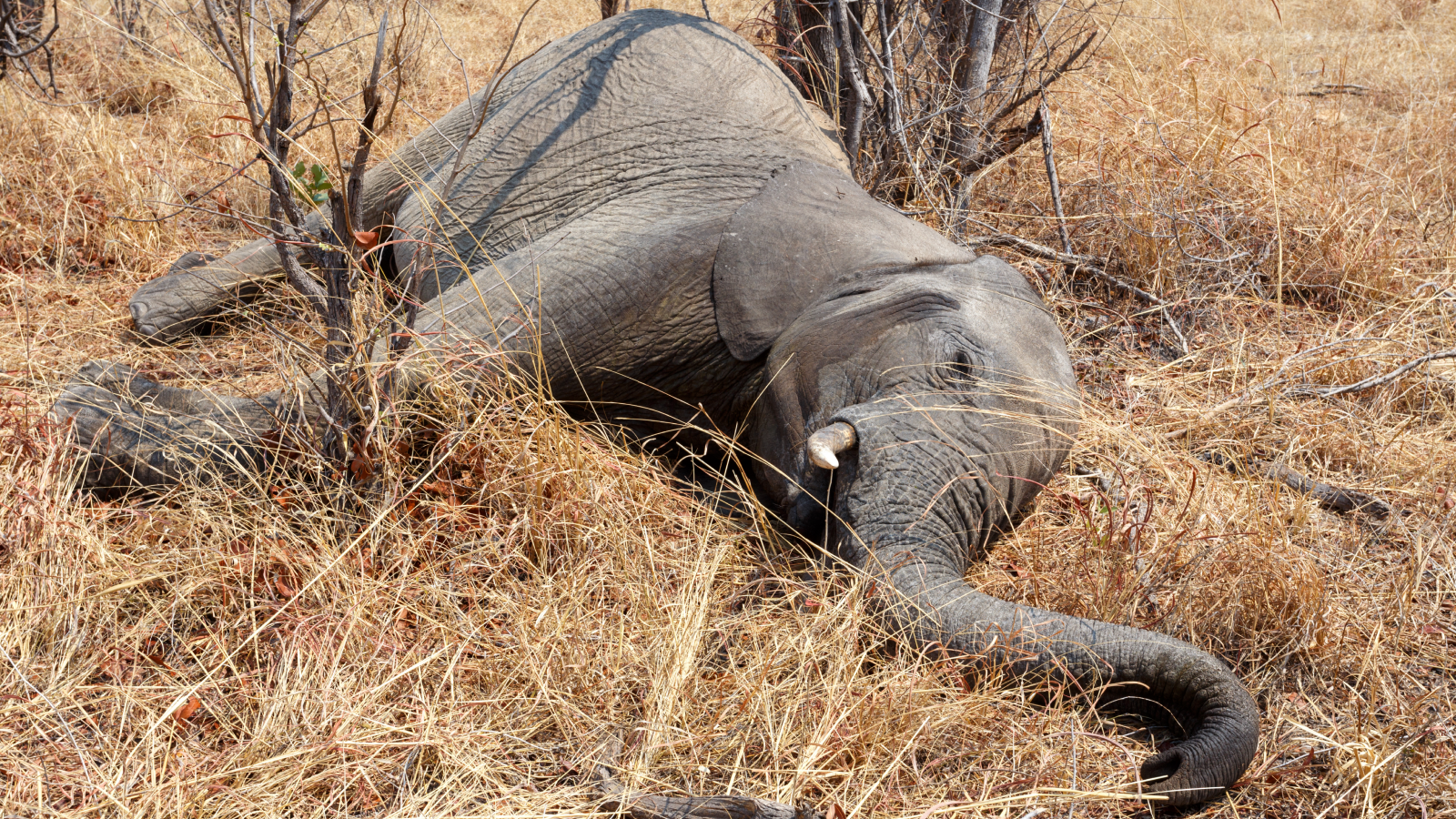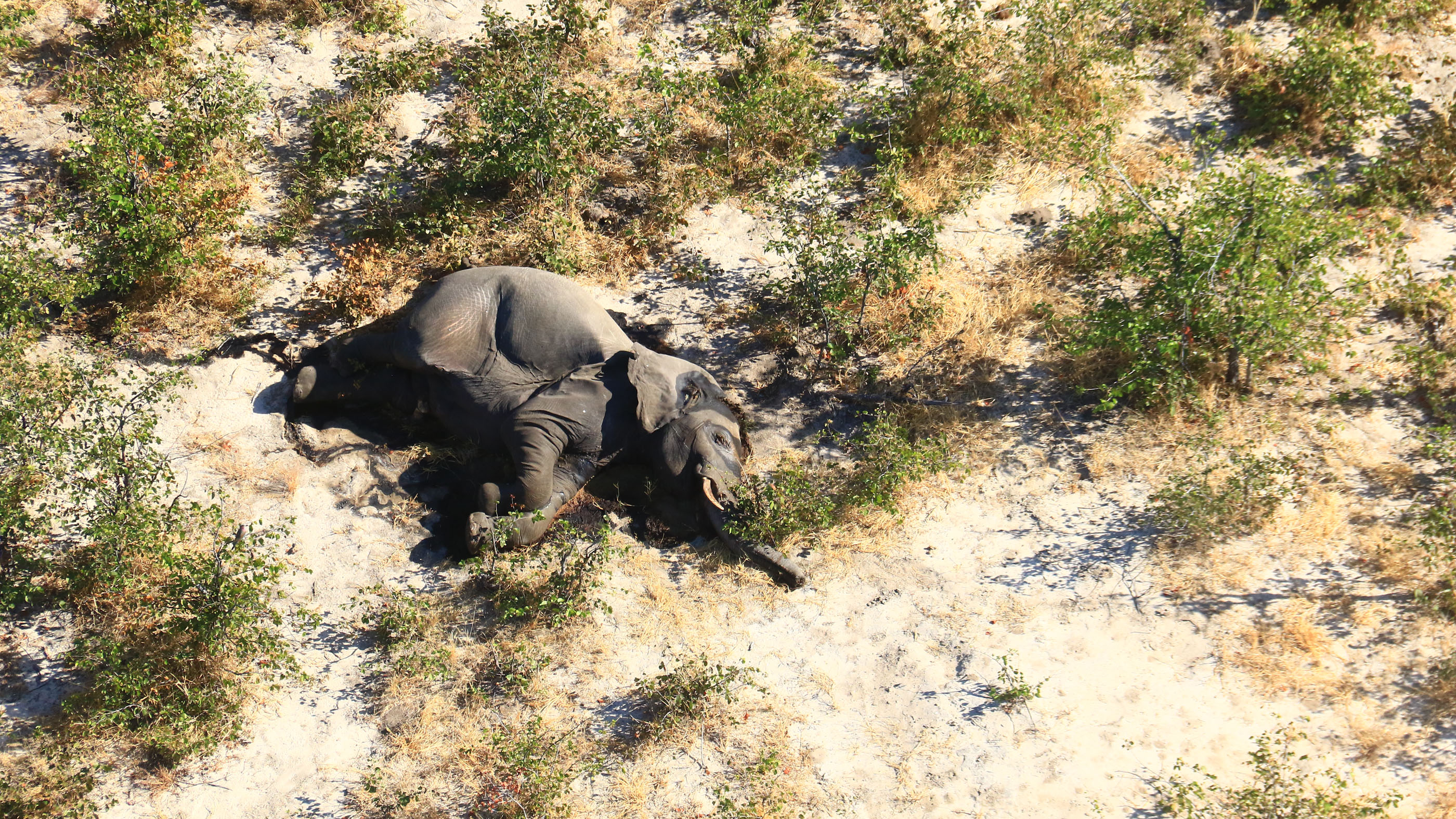Deadly bacteria may be the culprit behind mysterious elephant die-off
Scientists found a potential cause of a mysterious die-off of African savanna elephants in 2020 after they discovered deadly bacteria lurking in six corpses.

A deadly bacterium has been found in the bodies of six African savanna elephants that mysteriously died off in Zimbabwe in 2020. At the time, the carcasses of 35 African elephants (Loxodonta africana) were found scattered across the north of the country.
The bacteria may explain the recent elephant die-off, as well as one in neighboring Botswana, researchers reported Oct. 25 in the journal Nature Communications.
Related: Why 200,000 antelope dropped dead in 3 weeks
From August to November 2020, 35 elephants in Zimbabwe died of mysterious causes. Just before this, 350 African elephant carcasses were found scattered in Botswana. Because most of the carcasses were near watering holes, scientists initially believed that the elephants ingested toxins produced by microscopic algae called cyanobacteria, which were present in the drinking water. Another leading theory was a disastrous outbreak of a type of bacteria called Pasteurella multocida, which can infect people after they are bitten and scratched by wild or domesticated animals, such as cats and dogs. P. multocida is naturally present in the throats of healthy wild animals, but stressful environmental conditions, such as high temperature and humidity, may fuel bacterial overgrowth that turns it into a deadly pathogen.
In 2015, P. multocida killed roughly 200,000 saiga antelopes (Saiga tatarica tatarica) in central Kazakhstan, wiping out 62% of their global population in just three weeks.

In the new study, scientists from the Victoria Falls Wildlife Trust, the Animal and Plant Health Agency UK, the University of Surrey and laboratories in South Africa conducted necropsies on 15 elephants in the Zimbabwe die-off. They found high concentrations of the bacterium Bisgaard taxon 45, which is closely related to P. multocida, in the brain, liver and spleen of six of them. This bacterium is naturally found in the throats of parrot species.
Across multiple organs, the elephants also harbored lesions and hemorrhages indicative of a deadly form of bacterial blood poisoning known as hemorrhagic septicemia.
Sign up for the Live Science daily newsletter now
Get the world’s most fascinating discoveries delivered straight to your inbox.
This is the first time septicemia by a Pasteurella species has been reported in African elephants.
"Failure to identify Bisgaard taxon 45 in samples from all 15 elephants was likely due sample quality and delays in testing," the study authors noted.
The new findings raise the odds that Bisgaard taxon 45 caused the mass mortality event in Botswana, too. However, no one collected samples from elephants in Botswana to confirm the bacteria's role in those deaths.
That's because even getting to the samples was a challenge.
"Identifying and then reaching the carcasses in time to obtain useful samples is one problem we often face in this type of work," study lead author Dr. Chris Foggin, a wildlife veterinarian at the Victoria Falls Wildlife Trust, said in a statement.
The carcasses were so big that researchers needed special permits to transport samples, and that took time.
Scientists initially approached 25 of the elephants in Zimbabwe, but by the time the scientists arrived, 10 of the elephants were too decomposed to yield useful samples, according to the study.
A combination of environmental factors and elephants' social structure may have contributed to the bacteria's spread.
"Transmission of the bacteria is possible, especially given the highly sociable nature of elephants and the link between this infection and the stress associated with extreme weather events such as drought, which may make outbreaks more likely," Dr. Falko Steinbach, head of the virology department at the Animal and Plant Health Agency UK, said in a statement.
While drought may have stressed the elephants in Zimbabwe, poaching may have been a key stressor in Botswana, the study authors wrote.
African elephants are listed as endangered on the IUCN Red List of Threatened Species, and their population is declining mainly due to ivory-related poaching. .
According to the study, the declining African elephant population paired with uncertain climate conditions, puts the population under high pressure in the future.
"Further research is needed to learn more about the bacteria and its long-term implications for the African elephant population and other wildlife," Steinbach said.

Elise studied marine biology at the University of Portsmouth in the U.K. She has worked as a freelance journalist focusing on the aquatic realm. Elise is working with Live Science through Future Academy, a program to train future journalists on best practices in the field.
- Tia GhoseManaging Editor










